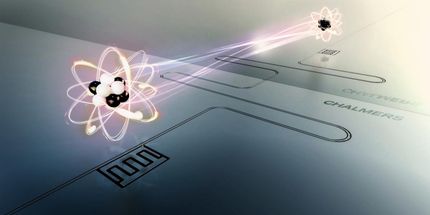Quantum holograms as atomic scale memory keepsake
Study demonstrates that quantum holograms could be a candidate for becoming quantum information memory
Advertisement
Russian scientists have developed a theoretical model of quantum memory for light, adapting the concept of a hologram to a quantum system. These findings from Anton Vetlugin and Ivan Sokolov from St. Petersburg State University in Russia are published in a study in EPJD. The authors demonstrate for the first time that it is theoretically possible to retrieve, on demand, a given portion of the stored quantised light signal of a holographic image – set in a given direction in a given position in time sequence. This is done by shaping the control field both in space and time. The ultimate goal is to introduce into quantum holograms the ability not only to store quantum signals but also to perform transformations of their quantum states – an approach useful for quantum communication and computation.
Quantum memory differs from conventional memory currently used in computers in its ability to write in and retrieve signals preserving their quantum state. Holograms are well-known classical memory devices that allow optical images to be written and retrieved. The authors of this study have previously suggested solving the problem of quantum memory for light by extending the idea of a classical hologram to a quantum domain. The hologram is written on a medium able to store quantum superposition – and not just the intensity of light beam as traditional holograms are.
The readout of both classical and quantum holograms is performed by the illumination of the medium with an external light pulse. It is referred to as the control field and is scattered on the internal structure of the hologram. To do so, the authors apply common theoretical methods of quantum optics, including quantum description of cold atoms that compose the storage medium, as well as quantum theory of light propagation and interaction with the medium.
Original publication
Original publication
Vetlugin, A.N. and Sokolov, I.V.; "Addressable parallel cavity-based quantum memory."; European Physical Journal D.
Organizations
Other news from the department science

Get the chemical industry in your inbox
By submitting this form you agree that LUMITOS AG will send you the newsletter(s) selected above by email. Your data will not be passed on to third parties. Your data will be stored and processed in accordance with our data protection regulations. LUMITOS may contact you by email for the purpose of advertising or market and opinion surveys. You can revoke your consent at any time without giving reasons to LUMITOS AG, Ernst-Augustin-Str. 2, 12489 Berlin, Germany or by e-mail at revoke@lumitos.com with effect for the future. In addition, each email contains a link to unsubscribe from the corresponding newsletter.






















































